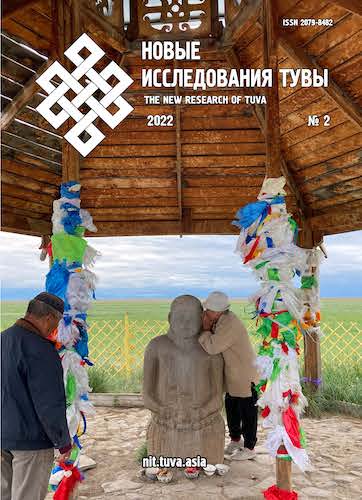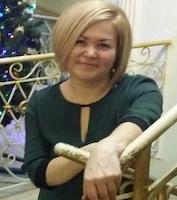Developing geocultural branding in Tuva and Bashkortostan
DOI:
https://doi.org/10.25178/nit.2022.2.8Keywords:
Bashkortostan; Tuva; geocultural branding; marketing communications; advertising; natural park; biosphere reserve; geopark; image of a territory; recreation and culture; internal tourismAbstract
The article examines the problems of branding geoculturally important objects — natural and cultural protected areas, such as reserves, parks, geoparks or biosphere reserves in Tuva and Bashkortostan. For sources of our study, we relied on official documentation of regional governments, website content, as well as data from monitoring public opinion on recreation zones, health resorts, and awareness of services available there.
In both republics, tourism offers are quite similar, including environment, ethnic and geographical tourism. Tourist potential is clearly linked to the social and economic potential of the region, and regional authorities help set up and promote the status of tourist recreation zones.
An obvious issue is that of scarcity of information and low awareness of tourist services among their potential consumers in the respective region, throughout Russia and outside the country. They tend to know little about the geocultural specifics and the prospects of enhancing tourism in the region — a trend corroborated by opinion polls. Among researchers, interest in tourism is clearly higher in Bashkortostan.
The authors look at logos and visual imagery of a number of institutions: in Tuva, these are the Ubsunur Hollow biosphere reserve, the Tuva nature park, the Aldyn Bulak ethnocultural facility; and in Bashkortostan, the Yangan Tau geopark, the Shulgan Tash biosphere reserve and the Bashkirsky Ural wildlife reserve. All of these follow the general aim of geocultural branding, which is protecting and preserving unique geocultural heritage — landscape, flora and fauna, as well as monuments of culture. Another problem is how to account for this important component in promoting tourist services.
All in all, these unique opportunities do get some promotion in the two regions, but as yet, the coverage is insufficient.
References
Akbashev, A. R., Abdrashitov, R. Kh., Ardislamov, F. R., Belan, L. N., Bogdan, E. A., Polezhankina, P. G., Farkhutdinov, I. M. and Farkhutdinov, A. M. (2018) Geopark «Iangan-tau» [The Yangan Tau Geopark]. Geologicheskii vestnik, no. 1, pp. 3–12. (In Russ.). DOI: https://doi.org/10.31084/2619-0087/2018-1-1
Ardislamov, F. R. (2017) Geologicheskie pamiatniki prirody i mery po ikh okhrane i ratsional'nomu ispol'zovaniiu v Respublike Bashkortostan [Geological monuments of nature and measures for their protection and rational use in the Republic of Bashkortostan]. Vestnik Bashkirskogo universiteta, vol. 22, no. 2, pp. 418–423. (In Russ.).
Dianova, Yu. V. and Dianov, S. A. (2020) Iarmarochnoe proshloe i nastoiashchee dlia geokul'turnogo brendinga ural'skikh gorodov [Past and present of the fair in geocultural branding of Ural cities]. Man and Culture, no. 3, pp. 60–72. (In Russ.). DOI: https://www.doi.org/10.25136/2409-8744.2020.3.32836
Zamiatin, D. N. (2013) Geokul'turnyi brending territorii: kontseptual'nye osnovy [Geocultural branding of territories: conceptual foundations]. Labirint. Zhurnal sotsial'no-gumanitarnykh issledovanii, no. 5, pp. 11–23. (In Russ.).
Maadyr, M. S. (2013) Arzhaany Tuvy v kontekste razvitiia turistsko-rekreatsionnykh zon [Tuvan arzhaans in context of developing the touristic and recreation zones]. New Research of Tuva, no. 4, pp. 151–154. (In Russ.).
Madiukova, S. A. (2018) Mental'nye i etnopsikhologicheskie osobennosti tuvintsev v sisteme determinant razvitiia Respubliki Tyva (na primere etnoturizma) [Mental and ethno-psychological features of Tuvans within the system of development determinants of the Republic of Tuva: the case of ethno-tourism]. New Research of Tuva, no. 2, pp. 72–94. (In Russ.). DOI: https://doi.org/10.25178/nit.2018.2.4
Malysheva, E. O. (2020) Etnokul'turnyi turizm v turistskoi destinatsii (na primere respubliki Tyva) [Ethno-cultural tourism in tourist destination (On the example of the Republic of Tuva)]. Servis plus, vol. 14, no. 3, pp. 31–37. (In Russ.). DOI: https://doi.org/10.24411/2413-693X-2020-10304
Oorzhak, K.-D. K. (2019) Klasternyi potentsial razvitiia turizma v respublike Tyva [Cluster potential of tourism development in the Republic of Tyva]. Vestnik Tuvinskogo gosudarstvennogo universiteta, no. 1(40), pp. 26–36. (In Russ.).
Farkhutdinov, I. M., Belan, L. N., Farkhutdinov, A. M., Ismagilov, R. A. and Bogdan, E. A. (2018) Geopark YuNESKO kak potentsial kul'turnogo i ekonomicheskogo razvitiia [The UNESCO geopark as a potential of cultural and economic development]. Razvedka i okhrana nedr, no. 4, pp. 50–54. (In Russ.).
Khairetdinova, N. E. (2018) Geoturizm v Bashkortostane: analiz materialov SMI i nekotorye vyvody [Geotourism in Bashkortostan: analysis of media materials and some conclusions]. Ekonomika Tsentral'noi Azii, vol. 2, no. 1, pp. 43–54. (In Russ.). DOI: https://doi.org/10.18334/asia.2.1.39074
Shaiakhmetov, R. R. (2019) Lechebno-ozdorovitel'nyi turizm v Bashkortostane, problemy effektivnosti i aspekty territorial'nogo razvitiia [Medical and health tourism in Bashkortostan, efficiency problems and territorial development aspects]. Azimut nauchnykh issledovanii: ekonomika i upravlenie, vol. 8, no. 2(27), pp. 371–373. (In Russ.). DOI: https://doi.org/10.26140/anie-2019-0802-0093
Anholt, S. (2005) Anholt nation brands index: How does the world see America? Journal of Advertising Research, no. 45, pp. 296–304.
Anholt, S. (2008) Editorial Place branding: Is it marketing, or isn’t it? Place Branding and Public Diplomacy, vol. 4, no. 1, pp. 1–6. DOI: https://doi.org/10.1057/palgrave.pb.6000088
Keller, K. L. (1999) Managing Brands for the Long Run: brand reinforcement and revitalization strategies. California management review, vol. 41, no. 3, Spring, pp. 102–124.
Published
How to Cite
For citation:
Garipova G. R. and Bodgan E. A. Problemy razvitiia geokul’turnogo brendinga v Tuve i Bashkortostane [Developing geocultural branding in Tuva and Bashkortostan]. New Research of Tuva, 2022, no. 2, pp. 115-127. (In Russ.). DOI: https://www.doi.org/10.25178/nit.2022.2.8
Issue
Section

This work is licensed under a Creative Commons Attribution-NonCommercial 4.0 International License.

Author(s) license holder(s) grant rights for their work to the journal (grantee of a license) under the simple non-exclusive open license in accordance with Art. 1286.1 «Open license for a research work, work of literature or fine arts», Civil Code of the Russian Federation.
New Research of Tuva publishes articles under the Creative Commons Attribution-NonCommercial license (CC BY-NC).
Since it is an open license, author(s) reserve the right to upload the article to their institutional repository, submit it to another journal (if it allows republications), or republish it on their own website (in full, or in part).
However, several conditions apply here:
a) The republished version must always contain the name(s) and affiliation(s) of the author(s), the original title and the hyperlink to the original version on the New Research of Tuva website;
b) It must be in open access, free of charge, and no category of readers must be in any way whatsoever advantaged over general readership.
c) should the contribution be submitted elsewhere by its author(s) without substantial modification (30% or more of original text unchanged), the body of the article should contain a disclaimer that the original version was published in New Research of Tuva (with a link to the respective page)
The CC-BY-NC is a non-revocable license which applies worldwide and lasts for the duration of the work’s copyright.










